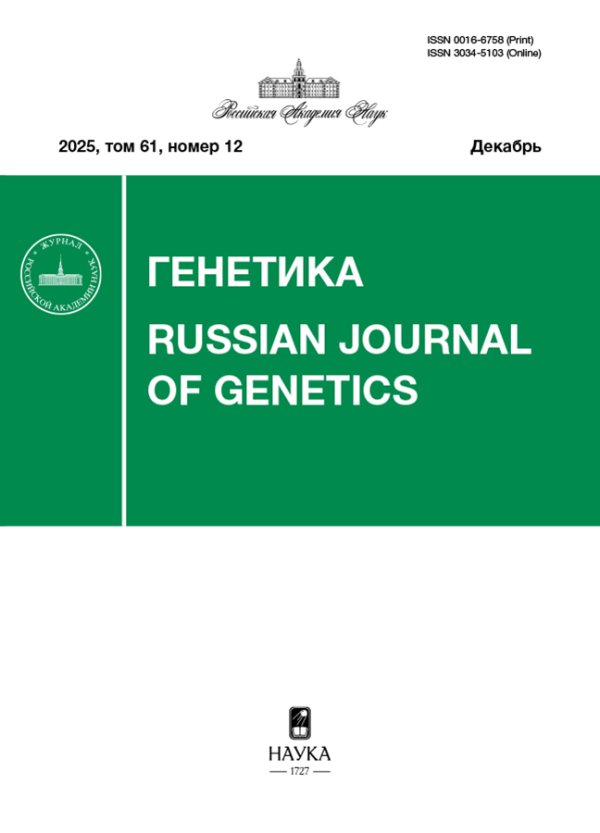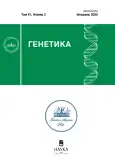Regulation of the NRF2 Transcription Factor Activity Via SIRT1-Induced Deacetylation: Possible SIRT1–NRF2 Feedback Loop
- Authors: Gureev A.P.1,2, Krutskikh E.P.1
-
Affiliations:
- Voronezh State University
- Voronezh State University of Engineering Technologies
- Issue: Vol 61, No 2 (2025)
- Pages: 3-11
- Section: ОБЗОРНЫЕ И ТЕОРЕТИЧЕСКИЕ СТАТЬИ
- URL: https://journal-vniispk.ru/0016-6758/article/view/291677
- DOI: https://doi.org/10.31857/S0016675825020017
- EDN: https://elibrary.ru/uwmmtv
- ID: 291677
Cite item
Abstract
NRF2 is a key component that is associated with protecting cells from damage. It is intersected by other signaling pathways that can have both direct and indirect effects on it. Proteins that can influence activity through acetylation and deacetylation, such as p300/CBP, HDACs and SIRT1, play an important role in these signaling pathways. But sometimes the research of different scientific groups contradict each other. On the one hand, there is evidence showing that acetylation increases the activity of NRF2, while deacetylation reduces the activity and level of transcripts of genes regulated by NRF2. On the other hand, some results show that activation of SIRT1 deacetylase increases the posttranslational activity of NRF2. At the same time, NRF2 itself affects the expression of SIRT1, forming a positive feedback loop. This review examines various aspects of the interaction between the activity of transcription factor NRF2 and acetylases/deacetylases, primarily SIRT1. In addition, variants of indirect interaction between NRF2 and SIRT1 through other signaling pathways associated with proteins such as PGC-1α and p62 are being considered.
Keywords
About the authors
A. P. Gureev
Voronezh State University; Voronezh State University of Engineering Technologies
Email: kru751@rambler.ru
Russian Federation, Voronezh, 394018; Voronezh, 394036
E. P. Krutskikh
Voronezh State University
Author for correspondence.
Email: kru751@rambler.ru
Russian Federation, Voronezh, 394018
References
- Hannan M.A., Dash R., Sohag A.A.M. et al. Neuro-protection against oxidative stress: phytochemicals targeting TrkB signaling and the NRF2-ARE antioxidant system // Front. Mol. Neurosci. 2020. V. 13. https://doi.org/10.3389/fnmol.2020.00116
- Jamwal S., Blackburn J.K., Elsworth J.D. PPARγ/PGC1α signaling as a potential therapeutic target for mitochondrial biogenesis in neurodegenerative disorders // Pharmacol. Ther. 2020. V. 219. https://doi.org/10.1016/j.pharmthera.2020.107705
- Kang T.C. Nuclear factor-erythroid 2-related factor 2 (NRF2) and mitochondrial dynamics/mitophagy in neurological diseases // Antioxidants (Basel). 2020. V. 9. № 7. https://doi.org/10.3390/antiox9070617
- Song M.Y., Lee D.Y., Chun K.S. et al. The role of NRF2/KEAP1 signaling pathway in cancer metabolism // Int. J. Mol. Sci. 2021. V. 22. № 9. https://doi.org/10.3390/ijms22094376
- Kim M., Jee S.C., Kim K.S. et al. Quercetin and isorhamnetin attenuate benzo[a]pyrene-induced toxicity by modulating detoxification enzymes through the AhR and NRF2 signaling pathways // Antioxidants (Basel). 2021. V. 10. № 5. https://doi.org/10.3390/antiox10050787
- Edamitsu T., Taguchi K., Okuyama R. et al. AHR and NRF2 in skin homeostasis and atopic dermatitis // Antioxidants (Basel). 2022. V. 11. № 2. https://doi.org/10.3390/antiox11020227
- Petri S., Körner S., Kiaei M. NRF2/ARE signaling pathway: Key mediator in oxidative stress and potential therapeutic target in ALS // Neurol. Res. Int. 2012. V. 2012. № 1. https://doi.org/10.1155/2012/878030
- Canning P., Sorrell F.J., Bullock A.N. Structural basis of Keap1 interactions with NRF2 // Free Radic. Biol. Med. 2015. V. 88. P. 101–107. https://doi.org/10.1016/j.freeradbiomed.2015.05.034
- Liu T., Lv Y.F., Zhao J.L. et al. Regulation of NRF2 by phosphorylation: consequences for biological function and therapeutic implications // Free Radic. Biol. Med. 2021. V. 168. P. 129–141. https://doi.org/10.1016/j.freeradbiomed.2021.03.034
- Joo M.S., Kim W.D., Lee K.Y. et al. AMPK facilitates nuclear accumulation of NRF2 by phosphorylating at serine 550 // Mol. Cell. Biol. 2016. V. 36. № 14. P. 1931–1942. https://doi.org/10.1128/MCB.00118-16
- Huang H.C., Nguyen T., Pickett C.B. Phosphorylation of NRF2 at Ser-40 by protein kinase C regulates antioxidant response element-mediated transcription // J. Biol. Chem. 2002. V. 277. № 45. P. 42769–42774. https://doi.org/10.1074/jbc.M206911200
- Apopa P.L., He X., Ma Q. Phosphorylation of NRF2 in the transcription activation domain by casein kinase 2 (CK2) is critical for the nuclear translocation and transcription activation function of NRF2 in IMR-32 neuroblastoma cells // J. Biochem. Mol. Toxicol. 2008. V. 22. № 1. P. 63–76. https://doi.org/10.1002/jbt.20212
- Cullinan S.B., Zhang D., Hannink M. et al. NRF2 is a direct PERK substrate and effector of PERK-dependent cell survival // Mol. Cell. Biol. 2003. V. 23. № 20. P. 7198–7209. https://doi.org/10.1128/MCB.23.20.7198-7209.2003
- Jimenez-Blasco D., Santofimia-Castaño P., Gonzalez A. et al. Astrocyte NMDA receptors' activity sustains neuronal survival through a Cdk5-NRF2 pathway // Cell Death Differ. 2015. V. 22. № 22. P. 1877–1889. https://doi.org/10.1038/cdd.2015.49
- Xu C., Yuan X., Pan Z. et al. Mechanism of action of isothiocyanates: the induction of ARE-regulated genes is associated with activation of ERK and JNK and the phosphorylation and nuclear translocation of NRF2 // Mol. Cancer Ther. 2006. V. 5. № 8. P. 1918–1926. https://doi.org/10.1158/1535-7163.MCT-05-0497
- Keum Y.S., Yu S., Chang P.P. et al. Mechanism of action of sulforaphane: Inhibition of p38 mitogen-activated protein kinase isoforms contributing to the induction of antioxidant response element-mediated heme oxygenase-1 in human hepatoma HepG2 cells // Cancer Res. 2006. V. 66. № 17. P. 8804–8813. https://doi.org/10.1158/0008-5472.CAN-05-3513
- Wong S.Y., Tan M.G., Wong P.T. et al. Andrographolide induces NRF2 and heme oxygenase 1 in astrocytes by activating p38 MAPK and ERK // J. Neuroinflammation. 2016. V. 13. P. 251. https://doi.org/10.1186/s12974-016-0723-3
- Sun Z., Chin Y.E., Zhang D.D. Acetylation of NRF2 by p300/CBP augments promoter-specific DNA binding of NRF2 during the antioxidant response // Mol. Cell. Biol. 2009. V. 29. P. 2658–2672. https://doi.org/10.1128/MCB.01639-08
- Kawai Y., Garduño L., Theodore M. et al. Acetylation-deacetylation of the transcription factor NRF2 (nuclear factor erythroid 2-related factor 2) regulates its transcriptional activity and nucleocytoplasmic localization // J. Biol. Chem. 2011. V. 286. № 9. P. 7629–7640. https://doi.org/10.1074/jbc.M110.208173
- Ding Y.W., Zhao G.J., Li X.L. et al. SIRT1 exerts protective effects against paraquat-induced injury in mouse type II alveolar epithelial cells by deacetylating NRF2 in vitro // Int. J. Mol. Med. 2016. V. 37. № 4. P. 1049–1058. https://doi.org/10.3892/ijmm.2016.2503
- Kulkarni S.R., Donepudi A.C., Xu J. et al. Fasting induces nuclear factor E2-related factor 2 and ATP-binding cassette transporters via protein kinase A and sirtuin-1 in mouse and human // Antioxid. Redox Signal. 2014. V. 20. № 1. P. 15–30. https://doi.org/10.1089/ars.2012.5082
- Huang K., Gao X., Wei W. The crosstalk between Sirt1 and Keap1/NRF2/ARE anti-oxidative pathway forms a positive feedback loop to inhibit FN and TGF-β1 expressions in rat glomerular mesangial cells // Exp. Cell. Res. 2017. V. 361. № 1. P. 63–72. https://doi.org/10.1016/j.yexcr.2017.09.042
- Gibbons M.D., Fang Y., Spicola A.P. et al. Enhancer-mediated formation of nuclear transcription initiation domains // Int. J. Mol. Sci. 2022. V. 23. № 16. https://doi.org/10.3390/ijms23169290
- Ganner A., Pfeiffer Z.C., Wingendorf L. et al. The acetyltransferase p300 regulates NRF2 stability and localization // Biochem. Biophys. Res. Commun. 2020. V. 524. № 4. P. 895–902. https://doi.org/10.1016/j.bbrc.2020.02.006
- Chang H.C., Guarente L. SIRT1 and other sirtuins in metabolism // Trends Endocrinol. Metab. 2014. V. 25. № 3. P. 138–145. https://doi.org/10.1016/j.tem.2013.12.001
- Yang Y., Liu Y., Wang Y. et al. Regulation of SIRT1 and its roles in inflammation // Front. Immunol. 2022. V. 13. https://doi.org/10.3389/fimmu.2022.831168
- Tang B.L. Sirt1 and the mitochondria // Mol. Cells. 2016. V. 39. № 2. P. 87–95. https://doi.org/10.14348/molcells.2016.2318
- Yang X., Park S.H., Chang H.C. et al. Sirtuin 2 regulates cellular iron homeostasis via deacetylation of transcription factor NRF2 // J. Clin. Invest. 2017. V. 127. № 4. P. 1505–1516. https://doi.org/10.1172/JCI88574
- Fang X., Lee Y.H., Zheng J. et al. ARD1-mediated NRF2 acetylation promotes human colon cancer cell proliferation // Cancer Res. 2020. V. 80. № 16. https://doi.org/10.1158/1538-7445.AM2020-4690
- Komaravelli N., Tian B., Ivanciuc T. et al. Respiratory syncytial virus infection down-regulates antioxidant enzyme expression by triggering deacetylation-proteasomal degradation of NRF2 // Free Radic. Biol. Med. 2015. V. 88. P. 391–403. https://doi.org/10.1016/j.freeradbiomed.2015.05.043
- Wang H., Yang G., Tian Y. et al. Sulforaphane inhibits angiotensin II-induced cardiomyocyte apoptosis by acetylation modification of NRF2 // Aging (Albany NY). 2022. V. 14. № 16. P. 6740–6755. https://doi.org/10.18632/aging.204247
- Mercado N., Thimmulappa R., Thomas C.M. et al. Decreased histone deacetylase 2 impairs NRF2 activation by oxidative stress // Biochem. Biophys. Res. Commun. 2011. V. 406. № 2. P. 292–298. https://doi.org/10.1016/j.bbrc.2011.02.035
- Chai D., Zhang L., Xi S. et al. NRF2 activation induced by sirt1 ameliorates acute lung injury after intestinal ischemia/reperfusion through NOX4-mediated gene regulation // Cell. Physiol. Biochem. 2018. V. 46. № 2. P. 781–792. https://doi.org/10.1159/000488736
- Zhuang K., Jiang X., Liu R. et al. Formononetin activates the NRF2/ARE signaling pathway via sirt1 to improve diabetic renal fibrosis // Front. Pharmacol. 2021. V. 11. https://doi.org/10.3389/fphar.2020.616378
- Sadovnikova I.S., Gureev A.P., Ignatyeva D.A. et al. NRF2/ARE activators improve memory in aged mice via maintaining of mitochondrial quality control of brain and the modulation of gut microbiome // Pharmaceuticals (Basel). 2021. V. 14. № 7. https://doi.org/10.3390/ph14070607
- Huang K., Huang J., Xie X. et al. Sirt1 resists advanced glycation end products-induced expressions of fibronectin and TGF-β1 by activating the NRF2/ARE pathway in glomerular mesangial cells // Free Radic. Biol. Med. 2013. V. 65. P. 528–540. https://doi.org/10.1016/j.freeradbiomed.2013.07.029
- Huang K., Chen C., Hao J. et al. Polydatin promotes NRF2-ARE anti-oxidative pathway through activating Sirt1 to resist AGEs-induced upregulation of fibronetin and transforming growth factor-β1 in rat glomerular messangial cells // Mol. Cell. Endocrinol. 2015. V. 399. P. 178–189. https://doi.org/10.1016/j.mce.2014.08.014
- Tennen R.I., Michishita-Kioi E., Chua K.F. Finding a target for resveratrol // Cell. 2012. V. 148. № 3. P. 387–389. https://doi.org/10.1016/j.cell.2012.01.032
- Baur J.A. Resveratrol, sirtuins, and the promise of a DR mimetic // Mech. Ageing Dev. 2010. V. 131. № 4. P. 261–269. https://doi.org/10.1016/j.mad.2010.02.007
- Ma F., Wu J., Jiang Z. et al. P53/NRF2 mediates SIRT1's protective effect on diabetic nephropathy // Biochem. Biophys. ActaMol. Cell. Res. 2019. V. 1866. № 8. P. 1272–1281. https://doi.org/10.1016/j.bbamcr.2019.04.006
- Arioz B.I., Tastan B., Tarakcioglu E. et al. Melatonin attenuates LPS-induced acute depressive-like behaviors and microglial NLRP3 inflammasome activation through the SIRT1/NRF2pathway // Front. Immunol. 2019. V. 10. https://doi.org/10.3389/fimmu.2019.01511
- Gureev A.P., Shaforostova E.A., Popov V.N. Regulation of mitochondrial biogenesis as a way for active longevity: Interaction between the NRF2 and PGC-1α signaling pathways // Front. Genet. 2019. V. 10. https://doi.org/10.3389/fgene.2019.00435
- Deng X., Lin N., Fu J. et al. The NRF2/PGC1α pathway regulates antioxidant and proteasomal activity to alter cisplatin sensitivity in ovarian cancer // Oxid. Med. Cell. Longev. 2020. V. 2020. № 1. https://doi.org/10.1155/2020/4830418
- Choi H.I., Kim H.J., Park J.S. et al. PGC-1α attenuates hydrogen peroxide-induced apoptotic cell death by upregulating Nrf-2 via GSK3β inactivation mediated by activated p38 in HK-2 cells // Sci. Rep. 2017. V. 7. № 1. P. 4319. https://doi.org/10.1038/s41598-017-04593-w
- Puigserver P., Rhee J., Lin J. et al. Cytokine stimulation of energy expenditure through p38 MAP kinase activation of PPARgamma coactivator-1 // Mol. Cell. 2001. V. 8. № 5. P. 971–982. https://doi.org/10.1016/s1097-2765(01)00390-2
- Fernandez-Marcos P.J., Auwerx J. Regulation of PGC-1α, a nodal regulator of mitochondrial biogenesis // Am. J. Clin. Nutr. 2011. V. 93. № 4. P. 884S–890S. https://doi.org/10.3945/ajcn.110.001917
- Puissant A., Fenouille N., Auberger P. When autophagy meets cancer through p62/SQSTM1 // Am. J. Cancer Res. 2012. V. 2. P. 397–413.
- Gureev A.P., Sadovnikova I.S., Starkov N.N. et al. p62-NRF2-p62 mitophagy regulatory loop as a target for preventive therapy of neurodegenerative diseases // Brain Sci. 2020. V. 10. № 11. https://doi.org/10.3390/brainsci10110847
- Jain A., Lamark T., Sjøttem E. et al. p62/SQSTM1 is a target gene for transcription factor NRF2 and creates a positive feedback loop by inducing antioxidant response element-driven gene transcription // J. Biol. Chem. 2010. V. 285. № 29. P. 22576–22591. https://doi.org/10.1074/jbc.M110.118976
- Feng L., Chen M., Li Y. et al. Sirt1 deacetylates and stabilizes p62 to promote hepato-carcinogenesis // Cell Death Dis. 2021. V. 12. № 4. P. 405. https://doi.org/10.1038/s41419-021-03666-z
Supplementary files










